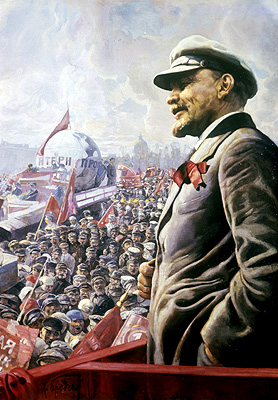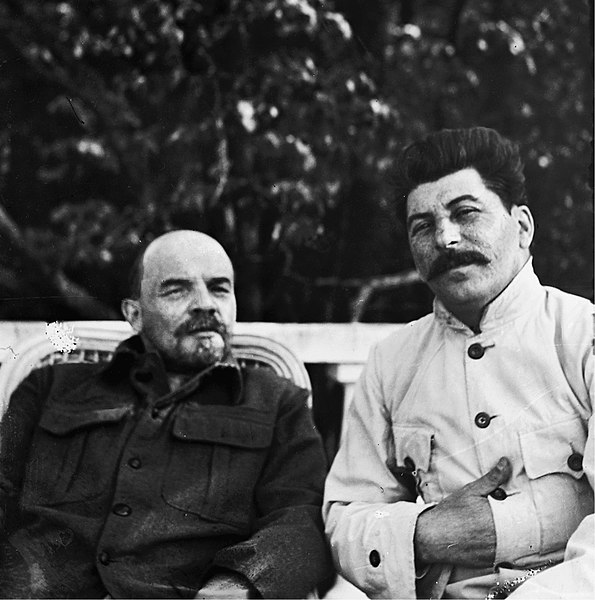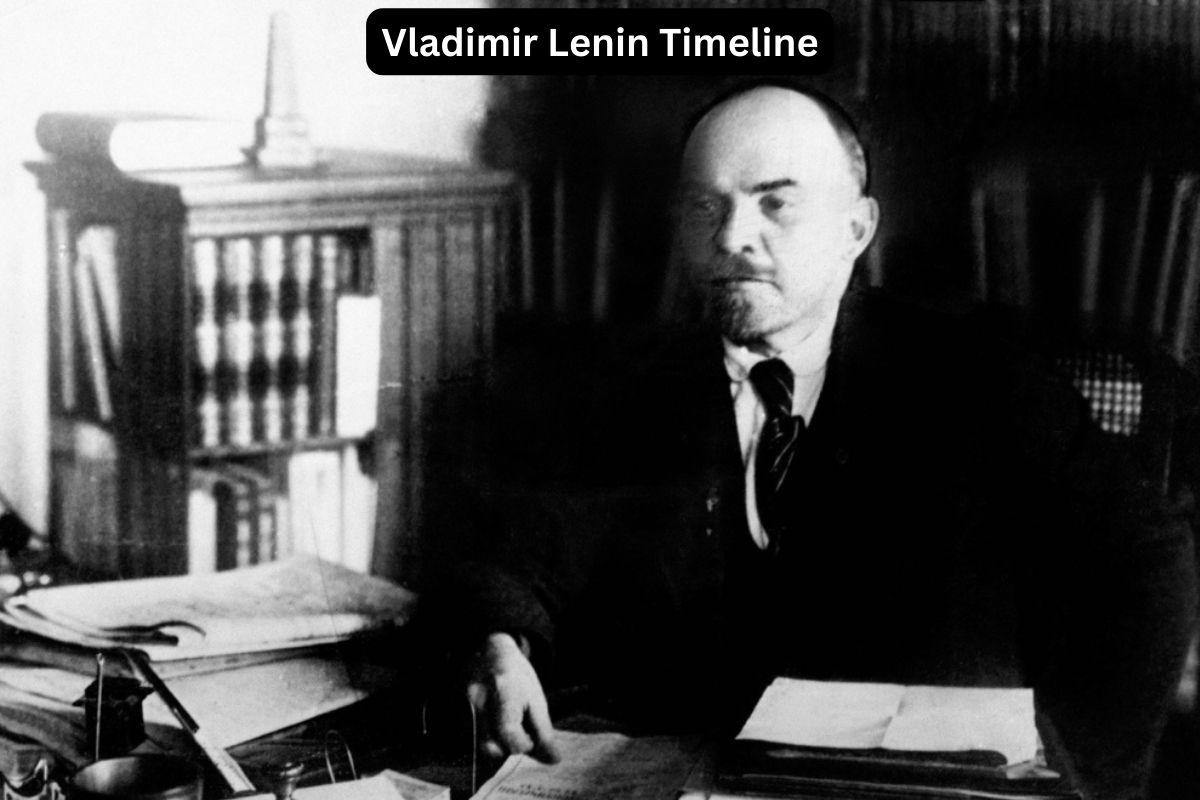Vladimir Lenin, born Vladimir Ilyich Ulyanov, was a pivotal figure in 20th-century history, whose ideas and actions reshaped the political landscape globally.
From his early days as a radical activist to leading the Bolshevik Party and founding the Soviet Union, Lenin’s life continues to be studied and debated.
In this article, we explore key milestones in Lenin’s life, tracing his journey and examining his enduring influence on revolutionary movements and Marxist theory.
Through understanding Lenin’s legacy, we gain insight into the complex interplay of ideology, power, and revolution in the 20th century.
| Year | Event |
|---|---|
| 1870 | Vladimir Ilyich Ulyanov (later known as Lenin) is born in Simbirsk, Russia. |
| 1887-1888 | Lenin’s older brother, Aleksandr, is executed for plotting to assassinate Tsar Alexander III. |
| 1893 | Lenin’s political activism begins as he becomes involved in Marxist circles. |
| 1895 | Lenin is arrested for his involvement in revolutionary activities and is exiled to Siberia. |
| 1900 | Lenin moves to Western Europe, where he meets other Marxist leaders. |
| 1903 | The Russian Social Democratic Labor Party (RSDLP) splits into Bolsheviks and Mensheviks. |
| 1905 | The Russian Revolution of 1905 occurs, leading to widespread unrest. |
| 1917 | In February, the abdication of Tsar Nicholas II occurs. In October, Lenin and the Bolsheviks seize power in the October Revolution. |
| 1918 | The Russian Civil War begins between the Bolshevik Red Army and the White Army. |
| 1922 | The Soviet Union is formally established, consolidating power under the Bolsheviks. |
| 1924 | Vladimir Lenin dies on January 21, 1924, in Gorki (now Gorki Leninskiye), near Moscow. |
Timeline of Vladimir Lenin
1870: Vladimir Ilyich Ulyanov (later known as Lenin) is born in Simbirsk, Russia
Vladimir Ilyich Ulyanov, later known as Lenin, is born on April 22nd in Simbirsk, Russia. He was born into a middle-class family.
His father, Ilya Ulyanov, was an educator and a regional official, while his mother, Maria Alexandrovna Ulyanova, was from a well-educated family. Lenin’s birth name was Vladimir Ilyich Ulyanov.

1887-1888: Lenin’s older brother, Aleksandr, is executed for plotting to assassinate Tsar Alexander III
During this period, Lenin’s older brother, Aleksandr Ulyanov, becomes involved in radical revolutionary activities. He was associated with a group plotting to assassinate Tsar Alexander III.
Also Read: Vladimir Lenin Accomplishments
In 1887, Aleksandr was arrested, tried, and subsequently executed by hanging for his involvement in the plot. This event deeply affected Lenin and greatly influenced his political views.
1893: Lenin’s political activism begins as he becomes involved in Marxist circles
Lenin’s political activism begins to take shape. He becomes involved in Marxist circles while studying law at Kazan University. During this time, Lenin starts distributing revolutionary literature and participating in discussions about socialism and the plight of the working class.
His exposure to Marxist ideas and his growing discontent with the social and political conditions in Russia lay the groundwork for his future revolutionary activities.
1895: Lenin is arrested for his involvement in revolutionary activities and is exiled to Siberia
In this year, Lenin’s activism takes a more concrete turn when he is arrested by the Tsarist authorities for his involvement in revolutionary activities. He is accused of spreading anti-government propaganda and organizing strikes among industrial workers.
Also Read: Karl Marx Facts
As a result, Lenin is exiled to Siberia for a three-year term. While in exile, he continues to study Marxist literature and correspond with fellow revolutionaries, further deepening his commitment to socialist ideology.

1900: Lenin moves to Western Europe, where he meets other Marxist leaders
Following his release from Siberian exile, Lenin moves to Western Europe, where he continues his revolutionary activities. He settles primarily in Switzerland, but also spends time in other European cities such as London and Paris.
In Western Europe, Lenin becomes involved in organizing socialist groups and publishing revolutionary newspapers and pamphlets. He also establishes connections with other prominent Marxist leaders, including Julius Martov and Georgy Plekhanov.
1903: The Russian Social Democratic Labor Party (RSDLP) splits into Bolsheviks and Mensheviks
This year marks a significant development in Russian revolutionary politics. The Russian Social Democratic Labor Party (RSDLP), which had been formed in 1898, splits into two factions: the Bolsheviks (meaning “majority” in Russian) and the Mensheviks (meaning “minority”).
The split is primarily over differences in organizational tactics and ideological interpretations. Lenin leads the Bolshevik faction, advocating for a more centralized and disciplined party structure, while the Mensheviks favor a looser, more inclusive approach.
This split would have far-reaching consequences for the future of Russian revolutionary movements.
1905: The Russian Revolution of 1905 occurs, leading to widespread unrest
The year 1905 sees the eruption of widespread unrest and political upheaval in Russia. Known as the Russian Revolution of 1905, this period is characterized by strikes, protests, and uprisings against the autocratic rule of Tsar Nicholas II.
Lenin, who is still in exile in Western Europe at this time, closely follows these events and actively supports the revolutionary activities taking place in Russia. The revolution ultimately fails to overthrow the Tsarist regime but serves as a precursor to the larger revolution that would follow in 1917.

1917: In February, the abdication of Tsar Nicholas II occurs. In October, Lenin and the Bolsheviks seize power in the October Revolution
The year 1917 marks a pivotal moment in Russian history. In February, a series of strikes and demonstrations in Petrograd (formerly St. Petersburg) lead to the abdication of Tsar Nicholas II and the collapse of the Russian monarchy.
A provisional government is established in its place, composed mainly of liberal and moderate socialist elements. However, dissatisfaction with the provisional government’s handling of the war and social issues continues to grow among the Russian populace.
In October (according to the Julian calendar, which was still in use in Russia at the time; November in the Gregorian calendar), Lenin and the Bolsheviks seize power in what becomes known as the October Revolution.
The Bolsheviks, supported by workers, soldiers, and sailors, overthrow the provisional government and establish a socialist state. Lenin becomes the leader of the new government and the head of the Council of People’s Commissars, effectively becoming the de facto leader of Soviet Russia.
1918: The Russian Civil War begins between the Bolshevik Red Army and the White Army
The year 1918 marks the beginning of the Russian Civil War, a conflict fought between the Bolshevik “Red Army” and various anti-Bolshevik forces known as the “White Army.” The civil war is characterized by intense fighting, political instability, and foreign intervention.
The Bolsheviks ultimately emerge victorious, consolidating their control over Russia and establishing the Russian Soviet Federative Socialist Republic, which later becomes the core of the Soviet Union.

1922: The Soviet Union is formally established, consolidating power under the Bolsheviks
In December 1922, the Union of Soviet Socialist Republics (USSR), commonly known as the Soviet Union, is formally established. The Soviet Union is a federal socialist state comprising multiple republics, with Russia being the largest and most influential among them.
The establishment of the Soviet Union marks the culmination of Lenin’s efforts to create a socialist state based on the principles of Marxism-Leninism.
1924: Vladimir Lenin dies on January 21, 1924, in Gorki (now Gorki Leninskiye), near Moscow
Vladimir Lenin dies on January 21, 1924, in Gorki (now known as Gorki Leninskiye), near Moscow. His death leads to a power struggle within the Communist Party, as various factions vie for control and seek to interpret and implement Lenin’s legacy.
This power struggle ultimately results in Joseph Stalin’s rise to power and the establishment of a centralized, authoritarian regime in the Soviet Union, marking a departure from Lenin’s vision of socialism. Nonetheless, Lenin’s ideas and contributions continue to shape the course of Soviet and world history for decades to come.
